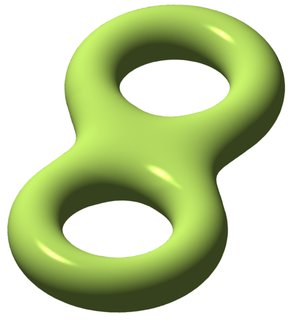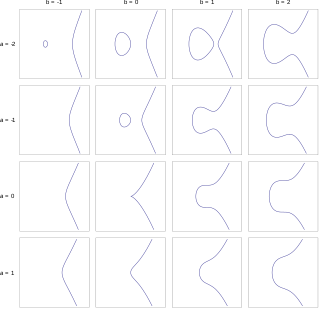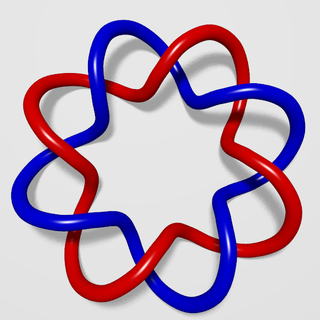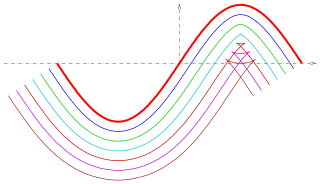This article needs additional citations for verification .(February 2013) (Learn how and when to remove this template message) |
The chiral Potts curve is an algebraic curve defined over the complex numbers that occurs in the study of the chiral Potts model of statistical mechanics. For an integer N, the parameters in the Boltzmann weights of the model are constrained to lie on the intersection of two algebraic surfaces of degree N in projective 3-space.

In mathematics, a plane real algebraic curve is the set of points on the Euclidean plane whose coordinates are zeros of some polynomial in two variables. More generally an algebraic curve is similar but may be embedded in a higher dimensional space or defined over some more general field.

A complex number is a number that can be expressed in the form a + bi, where a and b are real numbers, and i is a solution of the equation x2 = −1. Because no real number satisfies this equation, i is called an imaginary number. For the complex number a + bi, a is called the real part, and b is called the imaginary part. Despite the historical nomenclature "imaginary", complex numbers are regarded in the mathematical sciences as just as "real" as the real numbers, and are fundamental in many aspects of the scientific description of the natural world.
The chiral Potts model is a spin model on a planar lattice in statistical mechanics. As with the Potts model, each spin can take n=0,...N-1 values. To each pair of nearest neighbor of spins n and n', a Boltzmann weight W(n-n') is assigned. The model is chiral, meaning W(n-n')≠ W(n'-n). When its weights satisfy the Yang-Baxter equation,, it is integrable. For the integrable chiral Potts model, its weights are parametrized by a high genus curve, the chiral Potts curve. Unlike the other solvable models, whose weights are parametrized by curves of genus less or equal to one, so that they can be expressed in term of trigonometric, or rational function (genus=0) or by theta functions (genus=1), this model involves high genus theta functions, which are not yet well developed. Therefore, it was thought that no progress could be made for such a difficult problem. Yet, many breakthroughs have been made since the 1990s. It must be stressed again that the chiral Potts model was not invented because it was integrable but the integrable case was found, after it was introduced to explain experimental data. In a very profound way physics is here far ahead of mathematics. The history and its development will be presented here briefly.
The equation is .
The curve has been known since papers published in 1987 and 1988. It has genus that is quadratic in N.

In mathematics, genus has a few different, but closely related, meanings. The most common concept, the genus of an (orientable) surface, is the number of "holes" it has. This is made more precise below.










